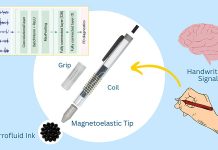
Parkinson’s disease, a neurodegenerative disorder that impedes normal daily activities, impacts approximately one million people in the United States.
Symptoms stem from the death of dopamine-producing brain cells, which control movement, resulting in shaking, stiffness, and issues with walking and coordination.
As the disease progresses, it may also impact memory and lead to dementia. A related condition, Lewy Body Dementia (LBD), wherein severe memory problems manifest early, affects an estimated 1.4 million people in the U.S.
Scientists from Scripps Research have recently made discoveries that could shed light on the origins and progression of these conditions.
The Unseen Culprits: Nitrogen Molecules and Protein Aggregates
Research has demonstrated that Parkinson’s disease and LBD generate highly reactive nitrogen molecules, including nitric oxide.
The Scripps Research team discovered that reactions involving these nitrogen molecules can disrupt a cellular system, autophagy, crucial for maintaining cell health by removing harmful protein aggregates.
These protein aggregates involve a protein called alpha-synuclein.
In healthy cells, these proteins are cleared away, but they form sticky clumps in the cells of people with Parkinson’s disease and LBD that the cell cannot remove, which can lead to brain cell damage.
The Role of p62: The Guardian of Cellular Health
The protein p62 plays a critical role in this process. Normally, p62 aids in autophagy, helping eliminate potentially harmful protein aggregates.
However, in cell and animal models of Parkinson’s, the researchers found that p62 is modified by a reaction involving nitrogen molecules, called S-nitrosylation, which occurs at unusually high levels in affected neurons.
This modification hinders p62’s function, leading to a buildup of harmful alpha-synuclein aggregates in cells.
The Domino Effect: Spread of Harmful Aggregates
The accumulation of alpha-synuclein aggregates within a brain cell is just the start. Once these aggregates build up, they can be released from the cell and taken up by other nearby neurons, causing the disease to spread throughout the brain.
This process aligns with what happens in the brains of individuals with Parkinson’s and LBD. The modification of p62 could be a pivotal factor in a chain reaction that stresses individual brain cells and helps spread this stress to other cells.
Potential New Treatment Strategies
These findings introduce a new potential target for treatments. If scientists can find a way to prevent the S-nitrosylation of p62, it could help to halt the buildup and spread of harmful alpha-synuclein aggregates in the brain, potentially providing a new approach to treat or prevent Parkinson’s disease and LBD.
Additional studies on the benefits of vitamins E and D in Parkinson’s prevention and treatment offer further avenues of investigation.
To learn more about brain health, check out recent research on new treatment methods for Parkinson’s disease, as well as links between COVID-19 and Parkinson’s.
This study was conducted by Stuart Lipton and colleagues and published in The Journal of Neuroscience.
If you care about Parkinson’s disease, please read studies about Vitamin E that may help prevent Parkinson’s disease, and Vitamin D could benefit people with Parkinson’s disease.
For more information about brain health, please see recent studies about new way to treat Parkinson’s disease, and results showing COVID-19 may be linked to Parkinson’s disease.
Follow us on Twitter for more articles about this topic.
Copyright © 2023 Knowridge Science Report. All rights reserved.



